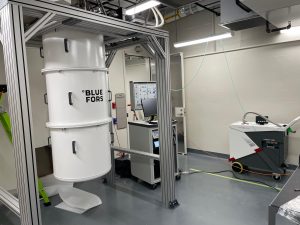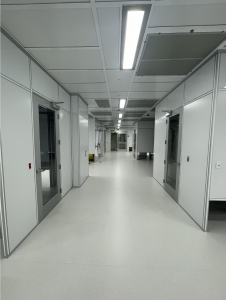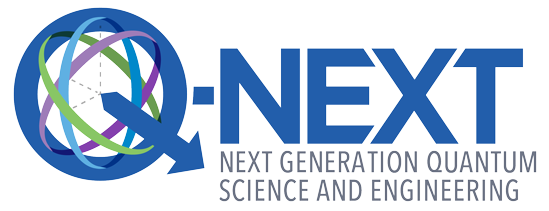by Nazar Delegan

The Q-NEXT team’s effort to build quantum foundries is gaining momentum as the new lab spaces are readied for the initial tool set and capabilities. At both Argonne and SLAC, the foundries are coming into their role as a national resource for quantum-relevant materials and devices, providing researchers with access to state-of-the-art materials and capabilities.
The roughly 6,000-square-foot Argonne quantum foundry space has been completed and is being readied for beneficial occupancy, which we received on Sept. 3. Key equipment such as the Intel test bed dilution refrigerator and various optical characterization set-ups are being commissioned.
Beyond the main foundry space, tools such as the CVD diamond growth tool (Seki Diamond), two environment-controlled annealing furnaces (RTA and vacuum), and a flip-chip bonding tool (SET-NA) have been installed and are undergoing final hook-up in shared laboratory spaces on the Argonne campus. These tools will expand our high-quality diamond growth capabilities, materials processing, and device fabrication capabilities, respectively.
We are now focused on obtaining the next generation of tools for the foundry, notably cutting, polishing, and surface treatment and growth tools for both silicon carbide and diamond quantum applications.

In parallel, the construction of the SLAC foundry space is rolling along. The SLAC Detector Microfabrication Facility will focus on the R&D and fabrication of high-precision superconducting devices. Beneficial occupancy was achieved on Aug. 25, and tool installation and hookup has begun.
SLAC awaits the arrival of two pieces of equipment that will be used for the synthesis of high-end, aluminum and aluminum oxide Josephson junctions. One is an ASML stepper, which will also be used for optimizing scalable device patterning. The other is a PLASSYS double-angled shadow evaporator.
In addition, new wet benches, chemical etching facilities, and lithography process flow tools are being processed for next year’s commissioning.
We look forward to growing our capabilities and scientific output as part of the Q-NEXT community.
Nazar Delegan is an Argonne assistant staff scientist and a member of the Q-NEXT Quantum Foundry thrust.
